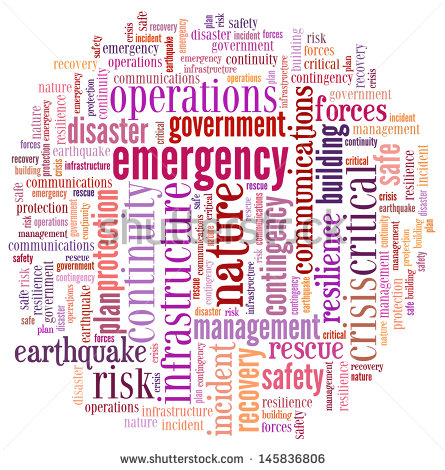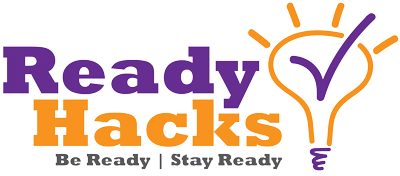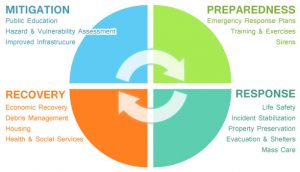
If you think that shootings, and ice storms, and the proverbial natural disaster are all about first responders, police response, and municipal funding – think again. The rare 1% emergency event has become so common it calls for more stakeholders, new strategies, increased awareness – it requires individual and community empowerment.
The life you save maybe yours, or your neighbors, or your employer.
40% of small businesses closed by a disaster – never reopen. This is the ripple effect to a community’s economy, jobs, infrastructure and recovery. Consider “only 38% of small businesses have a formal emergency or disaster preparedness plan in place,” according to a 2012 survey by small business software provider Sage North America. Easily 50% of all U.S. jobs are in small companies according to the SBA. Imagine the consequences for a community losing a small company impacting customers, taxes, services, vendors, schools, neighborhoods, employees and their families.
An estimated $188 billion cost is due to a record number of extreme weather events—heat waves, droughts, hurricanes, floods for United States 2011 and 2012 http://www.resilientamerica.org/our-communities-at-risk/extreme-weather-and-climate-change-are-we-prepared/. But wait, there’s more – the extended consequences are burdens on municipal infrastructure, water systems, energy resources, human impacts and even citizens sleeping on urban highways during freak ice storms which highlighted even more the compelling need for a statewide, “all-of-the-above”, disaster recovery plan. A measly 4 percent of spending for natural disasters today goes to prevention and preparedness, with 96 percent spent on response. But, — evidence shows every dollar spent on prevention brings at least $4 in savings on damage. http://www.weather.com/news/science/environment/cost-natural-disasters-has-quadrupled-recent-decades-official-20140606.
Even more compelling are the incidence of man-made terrorism and other types of gun violence from the school shootings at Sandy Hook and Columbine to Ferguson and Fort Hood, communities can mitigate the impacts of civil unrest and panic by establishing community-wide “buy-in” for increased preparedness awareness and working together. Make it just as routine as paying taxes, or PSA’s on heart disease, or taught in school with reading, writing and preparedness. Sure we pay our taxes and “governments should prepare policy measures for mitigation, preparedness, response, and recovery for all hazards” http://www.brookings.edu/research/opinions/2013/05/07-counter-terrorism-emergency-management-chung – combined with public/private collaboration, empowers communities to better leverage preparedness resources and ultimately mitigate short- and long term impacts.
Whether man-made or natural disaster, when bad things happen to good communities, a proven secret weapon are the combined power of collaboration and communication. First responders train, government’s plan, and with any luck companies invest in keeping their doors open but maximum resiliency – the ability for communities to have the systems and awareness to recover is 10 times greater when families, local businesses and whole neighborhoods are “invested” in preparedness.
Long before the ice storm, or the mass shootings, or even wildfire – communities are more empowered by:
- Planning for maximum crisis communications by trained professionals and media combined with awareness through volunteer networks, faith-based organizations, schools and disabled providers. Ongoing communications can play a powerful role to deliver sustained information year round.
- Building public/private collaborations, formal and informal, – between first responders and community leaders, between municipal officials and the media, between parents and business leaders, build the foundation for dialogue, awareness, planning, and being prepared.
Also check out my list of Resources for Empowered Communities 2.0.

